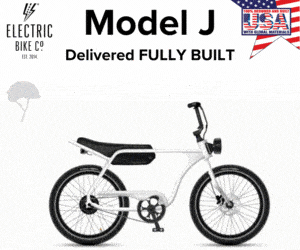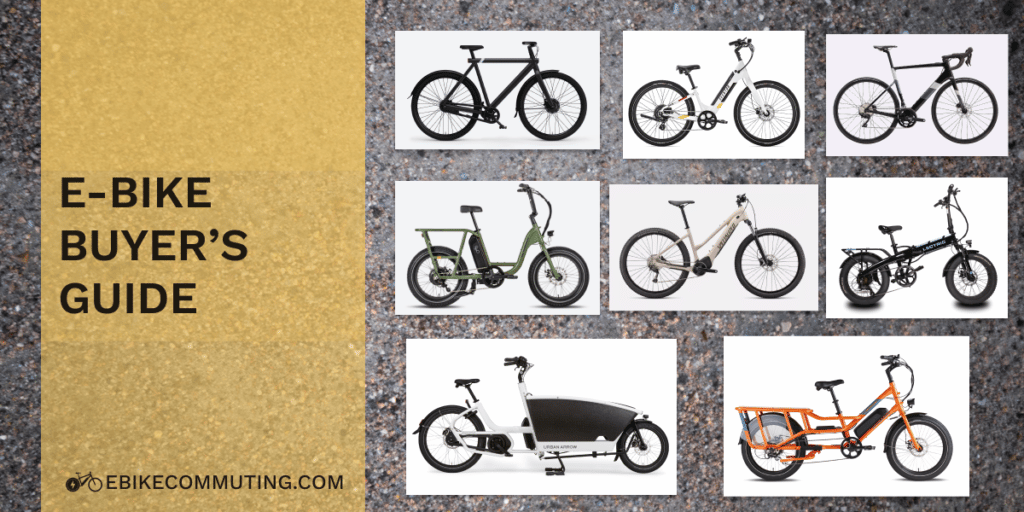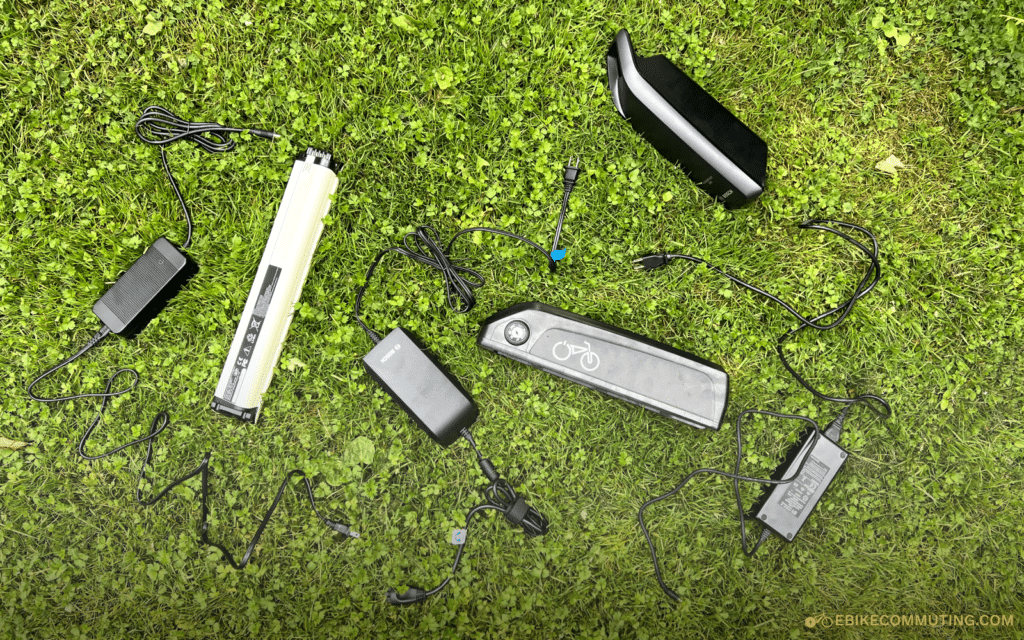Electric bicycles (e-bikes) have revolutionized the way we travel, making it easier and more efficient to get around. One of the key components of e-bikes is the sensor technology that they use to provide pedal assistance. Currently, there are two main types of sensors available for e-bikes, torque sensors, and cadence sensors. In this article, we will explore the differences between these two sensors, including how they work, their pros and cons, and how to choose the right one for your riding style.
Table of contents
Understanding Torque and Cadence Sensors
Before we dive into the differences between these sensors, let’s first take a closer look at how they work.
How Torque Sensors Work
Torque sensors, also known as pedal sensors, measure the amount of force you apply to the pedal. This measurement is then used to determine how much power to provide from the electric motor. The harder you pedal, the more assistance the motor provides. Torque sensors are known for their accuracy and responsiveness, as they can provide assistance in real-time based on your pedaling intensity.
One of the benefits of torque sensors is that they allow for a more natural riding experience. Since the assistance provided by the motor is directly tied to your pedaling effort, you can easily control the amount of assistance you receive. This can be particularly helpful when riding on hilly terrain or when you need an extra boost to keep up with a faster cyclist.
Another advantage of torque sensors is that they can help to extend the battery life of your electric bike. By providing assistance only when you need it, the motor doesn’t have to work as hard, which can help to conserve energy and increase your overall range.
How Cadence Sensors Work
Cadence sensors measure the speed at which you pedal. Typically, they use a magnet and a sensor to detect the rotation of the pedals. This information is then used to determine how much power to provide from the electric motor. Cadence sensors provide constant assistance regardless of how much force you apply to the pedals.
One of the benefits of cadence sensors is that they can be less expensive than pedal sensors. Since they don’t require as much precision in measuring your pedaling effort, they can be a more budget-friendly option for those looking to add electric assistance to their bike.
However, one downside of cadence sensors is that they can provide a less natural riding experience. Since the assistance provided by the motor is not tied directly to your pedaling effort, it can feel more like you’re being pushed along rather than actually riding the bike. This can be particularly noticeable when riding on hilly terrain or when you need to accelerate quickly.
Another disadvantage of cadence sensors is that they can drain your battery more quickly. Since the assistance is provided constantly, even when you don’t necessarily need it, the motor has to work harder and use more energy. This can lead to a shorter overall range for your electric bike.
In conclusion, both pedal and cadence sensors have their advantages and disadvantages. The best option for you will depend on your specific needs and preferences as a rider. Whether you’re looking for a more natural riding experience or a budget-friendly option, there is sure to be a sensor that will meet your needs.
Key Differences Between Torque and Cadence Sensors
When it comes to electric bikes, the right sensor can make all the difference in the world. Two of the most popular sensors are torque and cadence sensors, but they have some key differences that are worth exploring.
Sensitivity and Responsiveness
One of the main differences between torque and cadence sensors is their sensitivity and responsiveness. Torque sensors can detect even the slightest changes in pedal pressure and provide corresponding levels of assistance. This means that the assistance you receive is directly proportional to the amount of effort you put into pedaling. This can be particularly useful if you’re looking for a more natural riding experience, as it allows you to control the level of assistance you receive based on your own physical abilities. Cadence sensors, on the other hand, provide a constant level of assistance regardless of how much force you apply to the pedals. This can be useful if you’re looking for a more consistent and predictable riding experience, but it may not be as responsive to your individual needs.
Installation and Compatibility
Another key difference between these sensors is their installation and compatibility. Torque sensors are usually integrated into the bottom bracket of the bike and require professional installation. This can be a bit of a hassle if you’re not mechanically inclined, but it also means that the sensor is well-protected and less likely to be damaged. Cadence sensors, on the other hand, are easier to install and can be easily attached to the crank arm of the bike. This makes them a popular choice for people who want to upgrade their existing bike with an electric motor. Additionally, cadence sensors are more widely compatible with various e-bikes, while torque sensors may only be compatible with certain models.
Impact on Battery Life
Both torque and cadence sensors can have an impact on battery life, but in different ways. Torque sensors tend to be more efficient, as they provide assistance only when needed. This means that they can help to extend the battery life of your electric bike, particularly if you’re using it for longer rides. Cadence sensors, on the other hand, can drain the battery faster, as they provide constant assistance regardless of how much effort you put into pedaling. This means that you may need to recharge your battery more frequently if you’re using a cadence sensor.
Cost and Maintenance
Finally, cost and maintenance are important factors to consider when comparing these sensors. Torque sensors tend to be more expensive than cadence sensors, but they are also more accurate and responsive. Additionally, torque sensors require more maintenance and may need professional servicing from time to time. Cadence sensors, on the other hand, are less expensive and require less maintenance. This can make them a good choice if you’re looking for a budget-friendly option that doesn’t require a lot of upkeep.
Ultimately, the right sensor for you will depend on your individual needs and preferences. Whether you choose a pedal sensor or a cadence sensor, you can enjoy the benefits of electric-assisted biking and take your riding to the next level.
Pros and Cons of Torque Sensors
As e-bikes become increasingly popular, more and more riders are considering torque sensors as a way to enhance their riding experience. Torque sensors are an important component of e-bikes, as they provide real-time assistance based on the rider’s pedaling intensity. However, like any technology, there are both advantages and disadvantages to using pedal sensors.
Advantages of Torque Sensors
One of the biggest advantages of torque sensors is their ability to provide real-time assistance based on the rider’s pedaling intensity. This means that you get the exact amount of assistance you need, which can make your ride more efficient and enjoyable. Whether you’re riding up a steep hill or cruising along a flat road, torque sensors can help you maintain a consistent speed and reduce the amount of effort you need to exert.
Another advantage of torque sensors is their accuracy and responsiveness. Unlike other types of sensors, such as hub sensors, torque sensors provide a more natural and intuitive riding experience. This is because they are able to detect the rider’s pedaling motion and adjust the assistance accordingly, making for a smoother and more enjoyable ride. Personally, I prefer torque sensors over pedal sensors for this very reason.
Disadvantages of Torque Sensors
Despite their many advantages, torque sensors do have some disadvantages that riders should be aware of. One of the main disadvantages is their higher cost and maintenance requirements. Torque sensors are more complex than other types of sensors, which means they are more expensive to manufacture and maintain. This can make them a less attractive option for riders who are on a tight budget.
In addition, some riders may find it difficult to adjust to the changing levels of assistance provided by torque sensors. While the sensors are designed to provide assistance based on the rider’s pedaling intensity, some riders may find that the changes in assistance can be jarring or uncomfortable. This can lead to a less comfortable riding experience, particularly for riders who are new to e-bikes or who are not used to using torque sensors.
Overall, while there are both advantages and disadvantages to using torque sensors, they are an important component of e-bikes that can help riders achieve a more efficient and enjoyable ride. Whether you’re a seasoned e-bike rider or just getting started, it’s important to weigh the pros and cons of torque sensors before making a decision about which type of sensor to use.
Pros and Cons of Cadence Sensors
Advantages of Cadence Sensors
Cadence sensors are easier to install and more widely compatible with various e-bike models. Additionally, because they provide constant assistance, they require less effort from the rider, making them ideal for leisurely rides or for riders who require consistent assistance throughout their ride.
Disadvantages of Cadence Sensors
The main disadvantage of cadence sensors is their lack of responsiveness. Riders may feel that the assistance provided is not proportional to their pedaling effort, leading to a less natural and intuitive riding experience. Additionally, cadence sensors can drain the battery faster due to their constant assistance.
Choosing the Right Sensor for Your E-Bike
Factors to Consider
When choosing the right sensor for your e-bike, you need to consider your riding style and preferences. If you value accuracy and responsiveness, and are willing to pay a higher price and invest in maintenance, then torque sensors may be the right choice for you. However, if you prefer a more leisurely riding experience and require consistent assistance, then cadence sensors may be the better option.
Recommendations for Different Riding Styles
For riders who enjoy off-road cycling or high-intensity workouts, torque sensors are recommended for their accurate and responsive assistance. For commuters or leisure riders, cadence sensors are recommended for their ease of use and consistent assistance. Ultimately, the right sensor for your e-bike depends on your individual needs and preferences.
My Recommendation
Personally, I prefer torque sensors over cadence sensors because they give you a more natural bike riding feel. I find that cadence sensors are a bit delayed in giving me power when I begin to pedal and then don’t back-off the power if I slow pedal. This can sometimes cause me issues when I’m trying to move slowly but still need to pedal, the sudden acceleration requires me to turn down the pedal assist level to enable me to pedal slowly. With a torque sensor I don’t have to worry about that.



